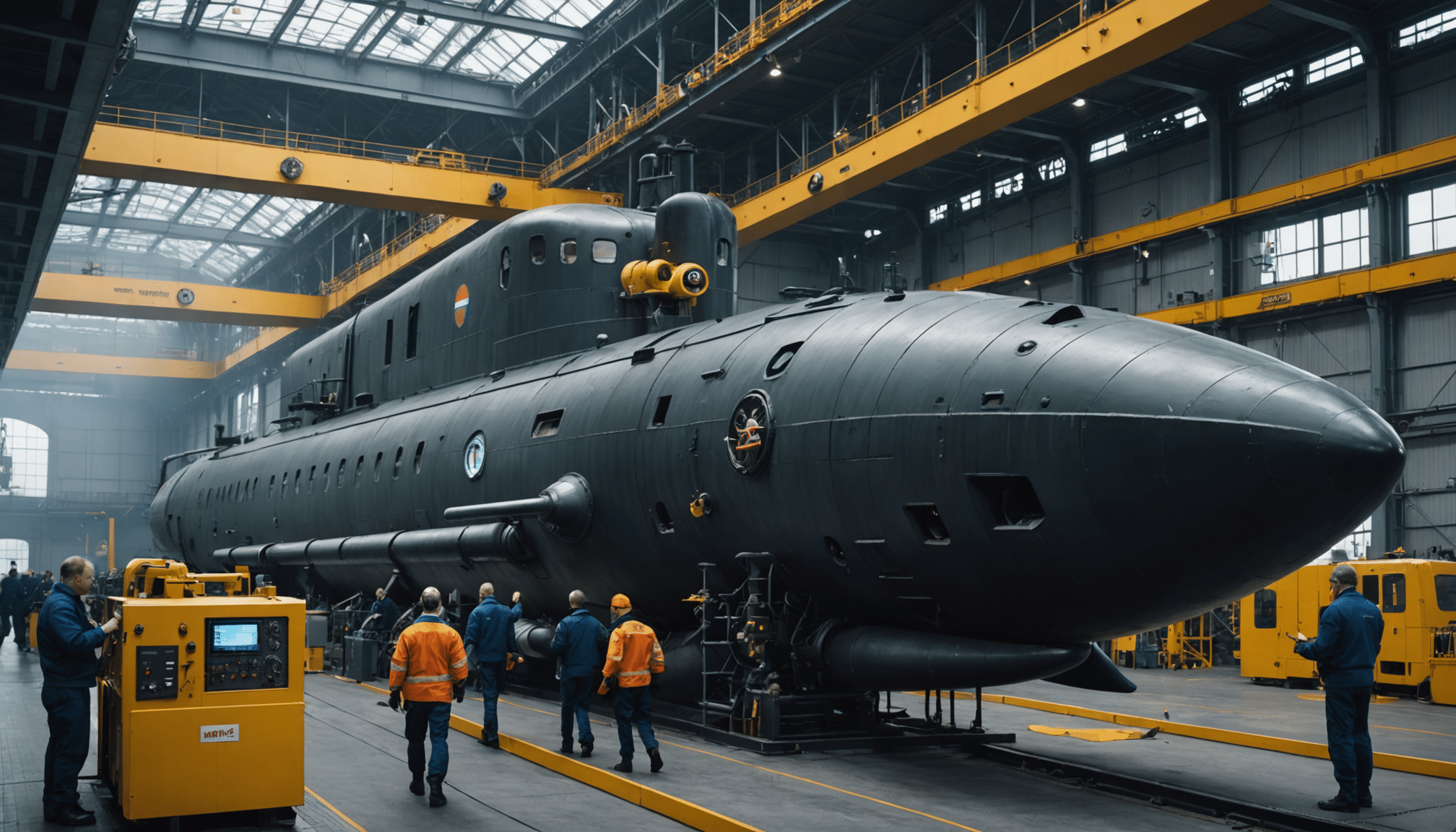The current situation in Russia highlights major challenges related to the supply of parts for its submarines. Faced with strict economic sanctions following geopolitical actions, the country must now start from scratch in the manufacturing of certain essential components for its warships. This necessity to develop local alternatives raises questions about Russia’s ability to maintain and strengthen its submarine fleet in a context where access to foreign technologies has become increasingly limited.
Russia must now turn to local production for essential parts of its submarines, particularly the Yasen-M class submarines, due to the economic sanctions imposed by the West. The need to replace foreign components, which have become difficult to procure, has led the Russian Ministry of Industry and Trade to launch tenders to develop new systems based on national technologies. This process involves the creation of a modified system for the electric motor and the implementation of remote control devices. The implementation of these modifications is scheduled for completion by 2028, marking a crucial step for Russia’s maritime security.

Table des matières
ToggleRussia and its challenges in submarine production
In the face of economic sanctions imposed by the West, Russia is forced to regain its autonomy regarding the production of certain essential parts for its submarines. The Ministry of Industry and Trade has recently launched tenders to develop critical components, including an auxiliary electric propulsion system. This initiative reflects the inability of the national industry to source foreign materials, following the imposition of these restrictive measures.
The stakes of automation and reliability
The modernization programs for submarines, particularly the 885M Yasen-M models, add extra pressure on the country’s industrial capabilities. The development of new technologies is crucial, especially in creating remote control units for circuit breakers, essential for protecting ships against electrical overloads. Currently, Russia uses devices made by foreign companies, which complicates the situation further.
A look towards the future
The Russian government plans to design a new electric propulsion system that integrates locally manufactured components. This initiative will not only mitigate current restrictions but also increase the lifespan and reliability of various equipment aboard submarines. The first modifications are expected to be completed by the end of 2027, with implementation planned for 2028. These efforts are crucial to ensuring Russia’s technological sovereignty in the naval domain.
La Norvège renonce à ouvrir ses fonds sous-marins à l'extraction minière en 2025https://t.co/0P86QlfpTp
— franceinfo (@franceinfo) December 2, 2024























